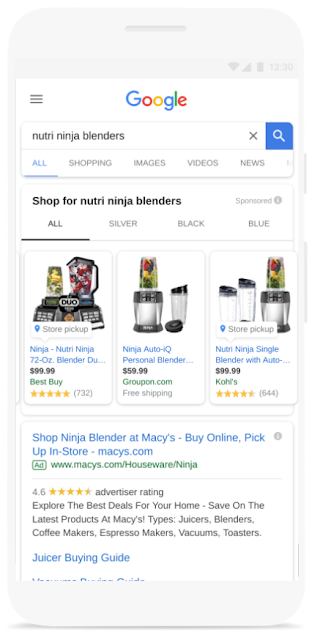We’ve all been there: eagerly anticipating a mobile site to load and then abandoning it out of frustration. It’s a challenge most businesses struggle with. In fact, 53% of visits are abandoned if a mobile site takes more than three seconds to load, according to Google data from 2016.1
See how you stack up
This morning at Mobile World Congress in Barcelona, we introduced the mobile Speed Scorecard: an easy-to-use tool that allows you to compare your mobile speed with other companies’.2
The Speed Scorecard shows the speeds of thousands of sites from 12 countries across the globe. It's powered by Chrome User Experience Report, the largest database of real-user latency data for how Chrome users experience popular destinations on the web.3
Here’s a sample scorecard:
 |
| * Fictitious companies used |
When it comes to mobile speed, we recommend that a site loads and becomes usable within five seconds on mid-range mobile devices with 3G connections and within three seconds on 4G connections. But there's a lot to gain by taking small steps to improve your site speed - even a one second improvement could increase conversions.
Calculate your opportunity
A slow mobile site doesn’t just frustrate your customers, it can limit your business. In retail, we see that for every one second delay in page load time, conversions can fall by up to 20%.4 That’s why we also introduced the Impact Calculator.5 With just a few inputs, the tool estimates the revenue impact that could result from improving the speed of your mobile site.6 See how much more you stand to gain by reducing load time by two seconds versus one second.
Open up the toolbox
At the end of the day, speed matters; and we want to help. Here are some of the other products and resources we recently introduced to help you speed up your mobile experience:
- Check out the “Landing Pages” page in the new AdWords experience to see which URLs in your account are mobile-friendly, which ones drive the most sales, and which ones may require your attention.
- Accelerated Mobile Pages (AMP) are so fast, they appear to load instantly. Today your Search campaigns can already drive clicks to these lightning fast pages. And, now, we’re actively working to expand support for Shopping campaigns to ensure a faster and more seamless shopping experience for customers.
- Later this year, AdWords will begin processing click measurement requests in the background so your customers won't have to wait quite as long for your landing page to load. To ensure your campaigns are ready for parallel tracking, be sure to reach out to your third-party measurement provider and confirm they're compatible or preparing for the change.
What should you do now?
When you’re ready to speed up your mobile site, here are a few tips to get started:
- Meet with your organization’s web development team to diagnose mobile latency issues
- Review this basic checklist of ways to optimize your mobile site
- If you want more advanced recommendations, work with your web development team to implement these user experience guidelines
1. Google Data, Aggregated, anonymized Google Analytics data from a sample of mWeb sites opted into sharing benchmark data, n=3.7K, Global, March 2016
2, 3, 6. There is more than one way to measure mobile site speed and many factors affect mobile site speed. Improving mobile speed doesn’t guarantee revenue increases. This model is based on data from Google Analytics accounts that have chosen to share anonymous aggregated data with Google for benchmarking purposes. This data is not used in the Speed Scorecard. n=383K, Global, Jan 2017 - December 2017
4. SOASTA, The State of Online Retail Performance, US, April 2017
5. The Impact Calculator was built for all businesses and was inspired by the DoubleClick Publisher Revenue Calculator, a tool to help publishers understand the impact of mobile site speed on ad revenue.














